STAY COURSE
HOW HUDSON PRINTING IS CHARGING FORWARD WITH PERSEVERANCE AND RESILIENCE

Print Combats a Lack of Trust • Silver Linings
The Right Culture in a New Landscape • Q&A with Susan Hodgkinson



HOW HUDSON PRINTING IS CHARGING FORWARD WITH PERSEVERANCE AND RESILIENCE

Print Combats a Lack of Trust • Silver Linings
The Right Culture in a New Landscape • Q&A with Susan Hodgkinson




Announcing the new ColorStream 8000 series — the next step in the evolution of the world’s most installed inkjet web press.
Designed in direct response to customer feedback on current and future industry challenges, the ColorStream 8000’s advanced technology sets a new standard for print quality, efficiency, productivity, and sustainability.
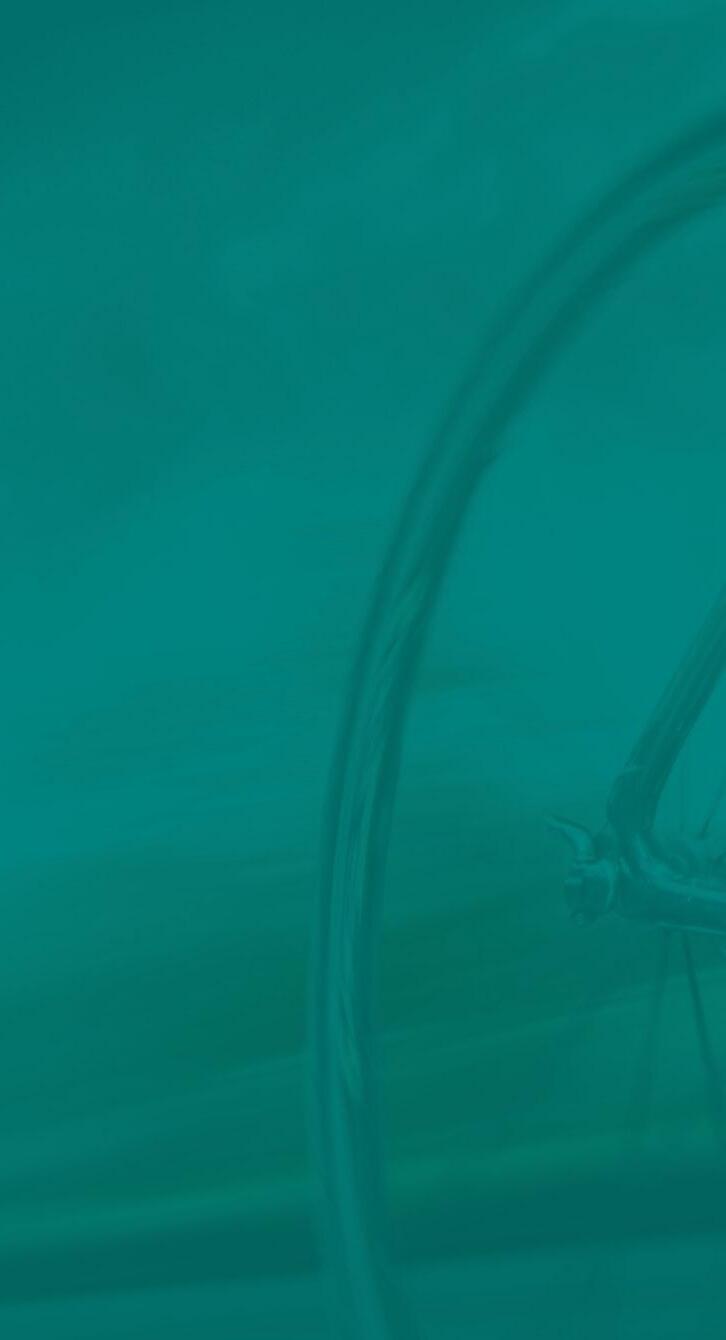

Find out how the ColorStream 8000 series can help transform challenges into opportunities, accelerate growth, and evolve your business to the next level.


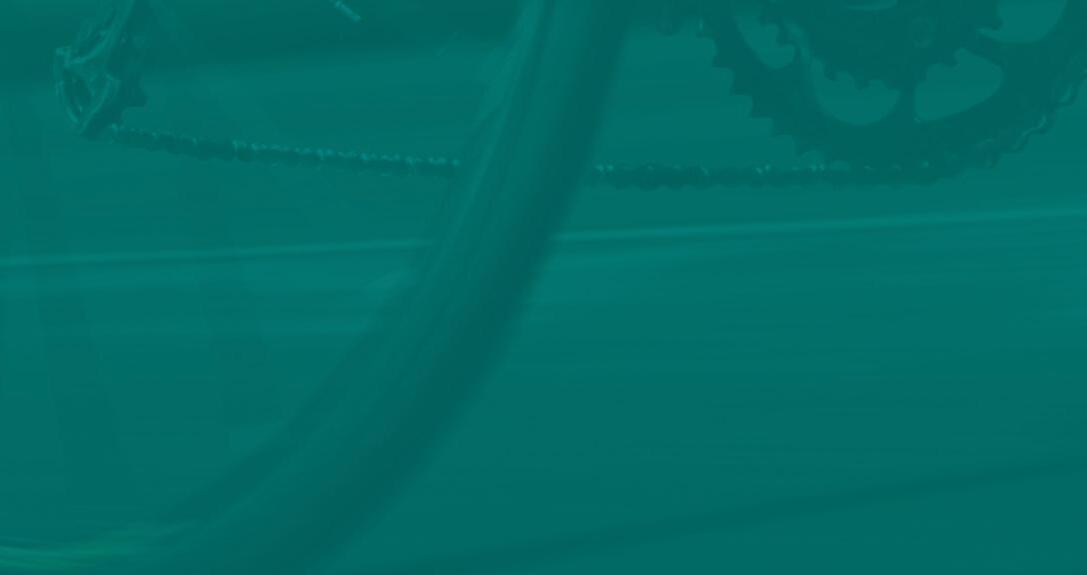


Thayer Long President, Association for PRINT Technologies
We have a lot of experts in motivation these days. There is no shortage of articles giving advice on productivity, getting ahead and dominating the universe. And while we are not experts in inspiration, we have listened to the most progressive minds in our industry discuss how they find the best version of themselves each and every day. Our single, most important observation is that the most successful people in this business are intrinsically motivated. Their self-talk is uplifting and does not create unwanted pressure. It’s simple semantics, but the words we use in our heads can elicit very different emotions or feelings. Our self-talk can also impact whether or not we enjoy an activity and persist when things get challenging. For example, when you last thought about marketing or strategic planning, you may have said, "I need to start marketing and talking to clients." But, this is a form of external motivation that makes you feel guilty if you do not follow through. These feelings of guilt tend to make a behavior less enjoyable and, when these emotions no longer exist, people often stop engaging in the behavior. On the other end of the spectrum is intrinsic motivation. When we want to do something because we find it enjoyable or we identify with it, the behavior is more likely to stick. Some of the best organizations that we have engaged seem to want to listen better. They desire a marketing process that allows them to be curious and learn. In turn, when companies and people are internally motivated, they are more likely to persist when challenged and put more effort into the practice, thus increasing their chances of success.
When companies and people are internally motivated, they are more likely to persist when challenged and put more effort into the practice, thus increasing their chances of success.
Don't get me wrong. There is nothing wrong with external motivation. Competing for a few extra bucks is not a bad thing. However, the best businesses seem to be dedicated to a marketing process that they wholeheartedly embrace. They are not tossing out a direct mail piece in the hopes that someone will call them for a quote. They have an ongoing process of market research and relationship building that is truly authentic.
I suggest we throw out the word “should” and rediscover the "want" for listening to our clients. Finding new ways to connect and understand clients is not only good business—it is cathartic. I am sure there have been instances when you have taken the time to talk with customers and walked away feeling energized. So, don't let go of that and have it fall into the "should" category ever again.
Hudson Printing wants it. Check out our cover story about how they exhibited resilience and perseverance in building a successful business. But, they also have a natural desire to listen to their clients and engage with them on a deeper level. And speaking of a deeper level, our feature, “Charge,” is a great reminder of how print combats a lack of trust. And I believe that is something we all want the world to know.
Enjoy the issue, eliminate the "should" from your day and accentuate the "want."
All the best,

2
12 8 4 16
Facts, figures and data that matters
STAY THE COURSE
Hudson Printing charges forward with perseverance and resilience
CHARGE
How print combats a lack of trust
SILVER LININGS
Marketing minds from the industry show encouragement
THE NEXT GENERATION
How Bryan Bolger is helping Bolger Inc. ring in a new age of print
18 22
THE VIBE
Building the right culture for a new landscape
INCLUSION IS NECESSARY
Diversity expert shares ideas of change
SUMMER 2021
Publisher: APTech
LeadingPRINT® magazine is published four times per year by the Association for PRINT Technologies. All rights reserved © 2021. Association for PRINT Technologies.
Managing Editor: Julie Shaffer
Editorial Advisor: Tom Moe, Daily Printing
Creative and Editorial: Conduit, Inc. | conduit-inc.com Find us online
LeadingPRINT.org
PRINTtechnologies.org
twitter.com/APT_tech | facebook.com/APTtechorg linkedin.com/company/association-for-print-technologies For advertising opportunities, contact Dusti Armstrong at darmstrong@aptech.org.
Send feedback and story ideas to jshaffer@aptech.org. Please recycle this magazine.
LeadingPRINT® magazine is a benefit of belonging to the Association for PRINT Technologies. To learn how to become a member, contact Dusti Armstrong at darmstrong@aptech.org.


"Our top best-practice for effective and lasting customer experience is to regard our customer as our partner—in the truest sense of the word. Not just being proactive versus reactive, but discovering, imagining and building things, together.”
— Jerome Wauthoz, Vice President of Product for Levels Beyond, on how to build a customer-centric mindset
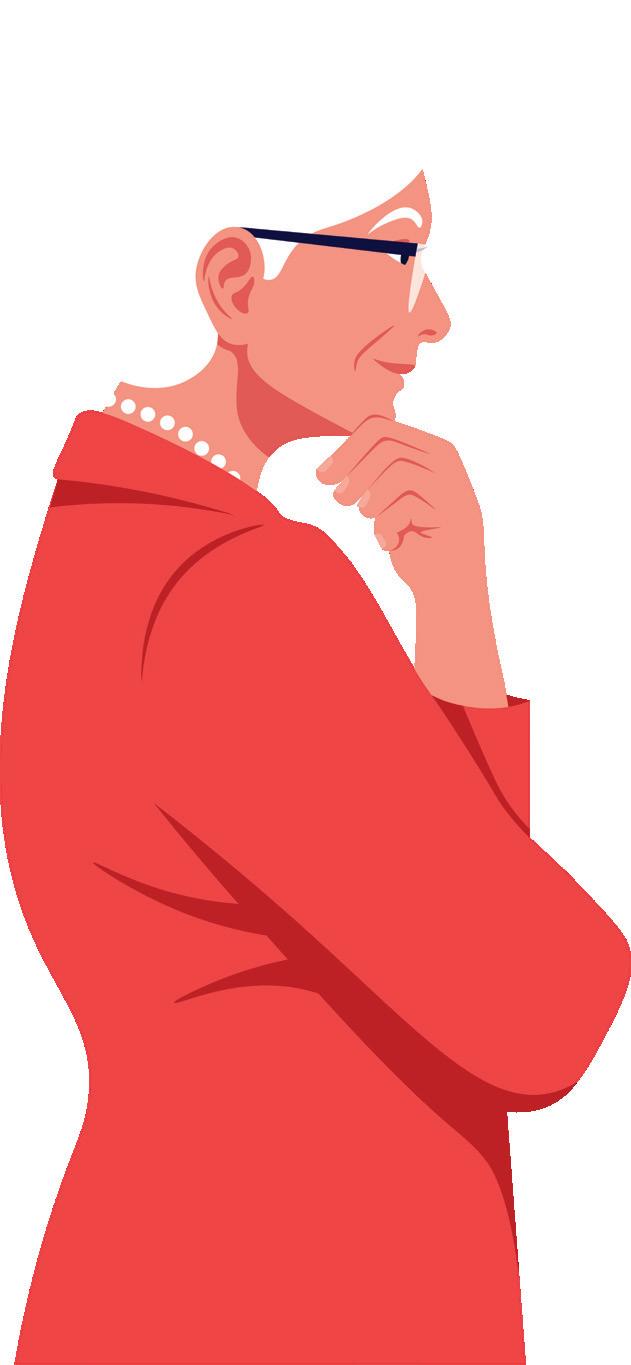
Issues that matter most to today's leaders
People have been slowly trickling back to the office and businesses are optimistic about the future. However, coming out of a global pandemic is sure to bring up some concerns. The "2021 Business Leaders Outlook" survey conducted by JPMorgan Chase & Co. found that physical safety is at the top of the list, which is no surprise in COVID times. Here are the other top-of-mind causes leaders today are backing:

The road to recovery is filled with ongoing challenges, but also opportunities for growth. While the pandemic forced leaders to shift their focus, now they are facing yet another shift coming out of it. The “2021 Gartner CEO and Senior Business Executive Survey” by Gartner, Inc. found that more CEOs (24%) are prioritizing the workforce—finding and keeping their best employees. Meanwhile, cost-cutting strategies saw the biggest decrease. Business is picking up and leaders are less concerned about cost management and are emphasizing the importance of skilled talent. Having the best and brightest workers will light the way forward and directly impact meeting organizational goals. Here are CEOs' top strategic business priorities for the next two years:

By Paul Hudson
Ilike to walk the plant, picking up samples of the work passing through Hudson Printing. I lay the pieces out in my office and ponder what each stakeholder (designer, writer, financial officer or senior manager) set out to accomplish. What led them to invent their specific piece? What was their goal? This exercise, which I have been doing for a while, never ceases to amaze and inspire me.
The beauty, color, texture, emotion and immense amount of data that can be derived from a printed piece is remarkable. Print is unlike any other medium. It’s emotional. Each piece has a weight, texture, imagery and language all its own. Print is sensory. We love it.
Think about it. Print can sell a product, inform, convert, promote a lifestyle or brand, celebrate an event, persuade you to visit a theatre and enhance your experience once you’re there. It’s durable, and has the ability to linger in your home or office doing its job—its job of reminding you. Beautiful print evokes emotion and inspires people to action.
That is why we are here. That is what stands at the very core of everything we do every day: to make a difference via print. The Hudson Printing Way is centered on the Why, How and What we do with print. Our why: We reinvent how print can make

an impact for our clients. How we do it: We possess a deep expertise in print, data and digital domains. What we do: We provide a broad, ever-expanding continuum of print, data and digital services.
"OUR FOCUS NEEDS TO BE—AND IS ALL ABOUT CLIENT OBJECTIVES. IF THAT IS OUR THOUGHT PROCESS, THE TOOLS AND WORKFLOW WILL BECOME APPARENT."
“Reinvent Print.” It’s a bold statement but not one we make without conviction. If you’ve been in business for 110 years you’ve seen lots of change. The way people print, what they print and service expectations have evolved. What clients want from
their printed communications, however, remains constant.
At Hudson Printing the reinvention of print is less about the tools and more about how we think. There are so many options for solving client communication objectives today it’s easy to get hung up in the weeds. Truthfully, the tools should matter only to us.
Our focus needs to be—and is all about client objectives. If that is our thought process, the tools and workflow will become apparent. Clients drive innovation, investment, direction and necessary skill sets. Technology is a response, not a cause. It doesn’t create vision; it provides a path. Technology enables progress.
Print, combined with digital connectivity makes instant responses possible. Today, audiences can receive a printed piece in the mail. It can be a publication, catalog, direct mailer or a donation request. As the piece does its job, the receiver can step to a computer or pick up their smartphone and respond. Activity can be instant. That’s power.
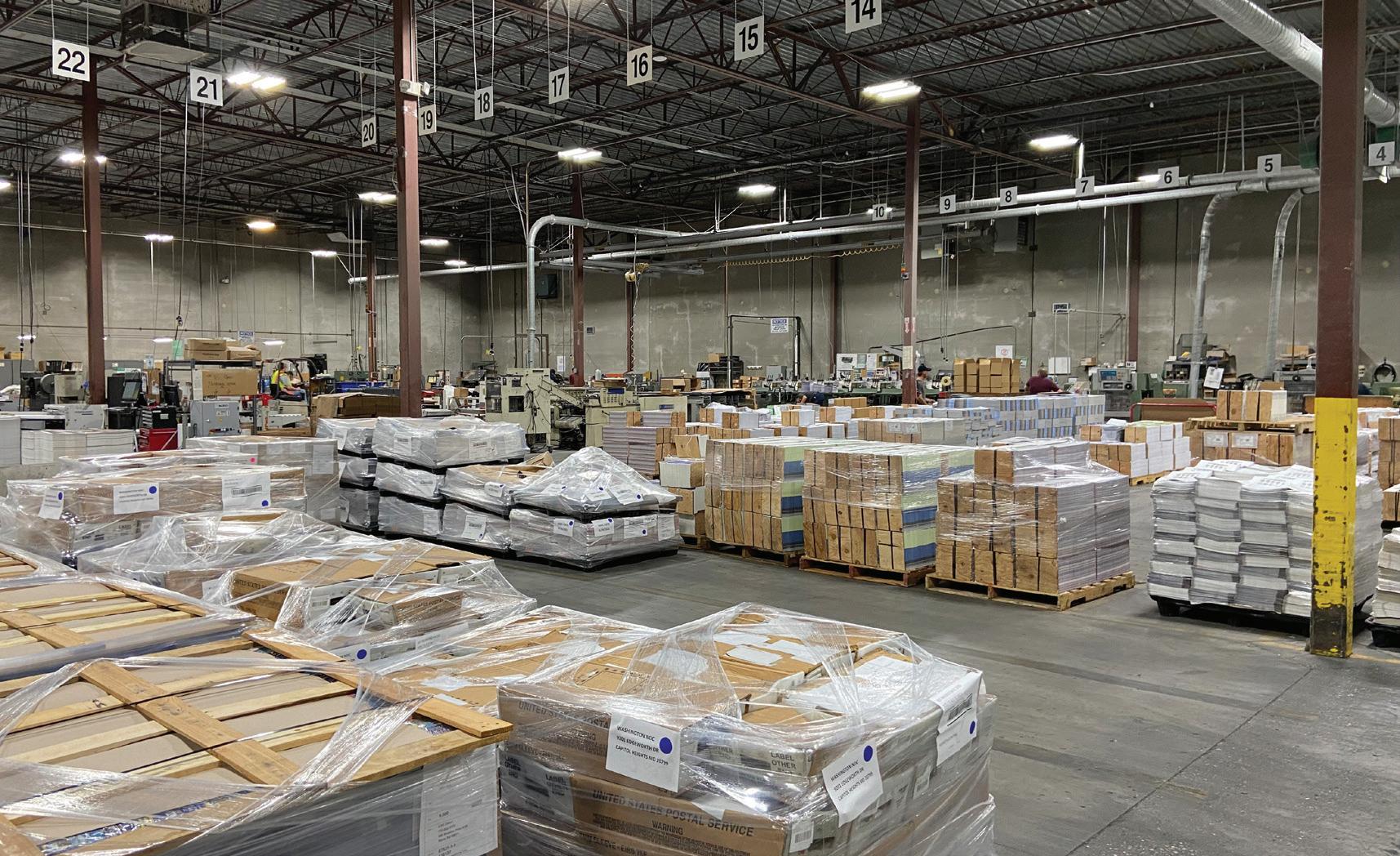

We happen to be leaders in traditional and digital print innovation. Our team is connected to the worlds of healthcare, education, manufacturing, entertainment, memory preservation, real estate, automotive, direct selling (MLM) government and others. We answer to a diverse and loyal client base with magazines, direct mail, catalogs, photo products and collateral, but we also manage print on demand solutions.
Hudson Printing clients have the option of automated workflows connecting their idea to presses and distribution with the click of a mouse. The answer, regardless of the path, is driven by customer preference and objectives. What we do and how we do it—Reinventing Print is client inspired.
We think this makes it an exciting time to be in print. If we’re honest, we can say yes to more than we ever have before. So much is
possible. Printing can be more personal, but it can also be more informed. We know more about audiences and we can share what works. Working as strategy partners with clients, we can help them be more successful and their communication dollar more effective.
"IF YOU’VE BEEN IN BUSINESS FOR 110 YEARS YOU’VE SEEN LOTS OF CHANGE. THE WAY PEOPLE PRINT, WHAT THEY PRINT AND SERVICE EXPECTATIONS HAVE EVOLVED. WHAT CLIENTS WANT FROM THEIR PRINTED COMMUNICATIONS, HOWEVER, REMAINS CONSTANT."
Reinvent Print has nothing to do with machinery or manufacturing processes. It has to do with making each printed piece more effective for the customer. It’s what makes us valuable—relevant.
ADOPT. LEARN. REPEAT. There have been plenty of twists and turns along the way. There have been missteps and more than once we’ve pressed the reset button. New directions don’t reveal their obstacles up front. When you set out to make changes you wind up inventing solutions on demand.
Our company started in 1909 as Stevens & Wallis Inc. We were publishers and an agency of sorts. Many of the rare and interesting books on early Utah
and her people were produced by Stevens & Wallis Inc.
In 1948 my father, Blaine Hudson, applied for a photo lithographer position with Utah Bank Note Company. He wasn’t qualified but impressed (Vaughn Young) the gentleman hiring. He was added that day as a janitor and truck driver.
My father left his position at Utah Bank Note Co., along with his boss who was buying Stevens and Wallis Inc., in 1952. In 1972 Blaine purchased the company from Vaughn Young and renamed it Blaine Hudson Printing. My brother, Mark, and I bought the company and renamed it Hudson Printing in 1992.
In 2012, I purchased my 15-yearolder brother’s part of the business and became the sole owner of Hudson Printing. Before then, I had been making a lot of noise about changing the dynamic of our company and developing a “digital” part of the business to complement the web-offset side. My brother, who had little appetite for new investments and risks, did not agree.
So, we made a deal. Once I had the opportunity to do my own thing, I set out building a digital business. Salt Lake City was filled with digital printing talent, so what could go wrong?
For starters, I underestimated the degree of difficulty it took to build a technological foundation— little things like on-going software engineering needs, job communication requirements and the time it took to actually develop a new business.
After an early misstep into the world of web-fed inkjet technology (I was wrong again), we added
a fleet of Indigo presses into our digital department. Overall, the experimenting ended up being a very expensive lesson. It was like starting over in the areas of workflow and business development. The whole process ended up taking several years, eventually detracting from the financial performance of the whole business. We certainly survived this struggle and even prospered but it was an expensive journey for a while.
I admit it—I never made a decision that I didn’t believe was the right one at the time. But the truth is we all make mistakes. In the end, there are two important lessons to dwell on: Don’t wait too long to correct the course of your actions and surround yourself with good people.

(L-R) Hudson Printing CEO Paul Hudson and Summit Sotheby's International Realty CMO Tiffany Fox celebrate a press check.
Parting Shots: Longevity teaches you things. It doesn’t guarantee a future, but it does equip you for the road ahead. Never stop learning. Never stop trying to make things better. Never stop asking what’s next. Never turn a blind eye to trends but focus on what motivates them. Don’t get hung up in the tools, focus on the goals. Take the risk of connecting the dots.
Paul Hudson is owner and CEO of Hudson Printing in Salt Lake City. Founded in 1909, Hudson Printing is one of the most trusted, high-quality commercial printers in North America. The Certified G7 Master Printer delivers quality printed solutions ranging from catalogs, books, and magazines, to brochures, booklets, postcards and direct mail.
(L-R) Mike McEvoy, VP Business Development Hudson Printing. Tiffany Fox, CMO Summit Sotheby's International Realty. Paul Hudson, CEO Hudson Printing. Bill Gillespie, Business Consultant


How print combats a lack of trust
atti Groh gets it. Print is something you can trust. You don’t have to believe her because she works in the industry—she is the Director of Marketing Communications for Sappi Fine Paper North America. You don’t have to side with her because “The Standard 5”—a virtual encyclopedia of special printing effects showcasing how designers can make printing on paper a multisensory experience—has been one of Sappi's most requested print pieces. She’d simply like you to “go to the tape,” so to speak. For example, a recent YouGov report, “Global Study: Which Types of Ads Do People Trust,” listed print as one of the leading mediums, clearly outdistancing things like social media ads.
“We all think of online communications as ‘interactive,’ yet we often forget the interaction print techniques and paper create for and deliver to a recipient,” Groh says. “When you hand someone ‘The Standard,’ they immediately begin the exploration of print on paper. They look; they touch; they rub; they smell; and they react, mostly with a smile or an ‘ah.’ It engages all the haptic senses while interacting with print.”
"Print connected to digital is going to drive the best results. It’s not either or—it needs to be both."
— Jessica Eng, VP Business Development, Alliance Franchise Brand

The power of print is the effect of creating impact and delivering something your recipient wants to keep—forever. And along with that, it makes them react. Take “The Standard,” a series of events held nationally. Recipients are invited via email and printed invitations. Universally, the RSVP rate has soared 300% the day the printed invites are received. The takeaways: A welldesigned, well-printed piece cuts through digital clutter and people tend to trust the printed piece more.
“Your mailbox can be more effective than your inbox,” Groh says.
Trust comes from holding something real. When consumers order something online, if the product does not live up to expectations, they may lose trust in the brand. Point and case: The physical product and packaging must be
congruent with the expectations the brand set up online. If the product arrives flimsy and cheap-looking, it most likely immediately loses some appeal. If the product is high-end and the packaging is not, that subconscious feeling sets in again, i.e., a lack of trust occurs.
“Trust is critical because people won't buy from a brand they don't trust,” Groh says. “It's one thing to acquire a customer, and it's something else entirely to maintain the customer's trust so that they buy from you again. Sensory marketing is an integral part of building and maintaining that trust. The world we live in is so competitive. The things that tap into our sense of touch will create a competitive edge. Embellishments, special effects, raised tactile effects, embossing/debossing, metallic inks, they are all thoughtful and distinct additions that enhance print.”
"Products that only exist in the digital world—sight, sound—don't feel as real as those that exist in the physical world of sight, sound, touch, smell and taste."
—
Patti Groh, Director of Marketing, Sappi North America
You want more proof? During the pandemic and the whole social distancing exercise, people suddenly were unable to connect in person, specifically changing some of the ways marketers engaged with their communities. But for marketers like Jessica Eng, VP Business Development at Alliance Franchise Brands, the post landscape that the pandemic has created will continue to showcase the power of print.
“People are deluged by email via their personal, professional and marketing communications,” Eng says. “Studies show that the physical, tactile nature of printed pieces connects in deeper and more memorable ways. But it’s not just the sense of touch. Compelling images and photography draw you in; personalized and relevant messaging motivates and inspires action. Scented paper and dimensional shapes engage and involve recipients further. Not to mention the ability to find a precise list of contacts based on selected criteria or buying behaviors— which means printed direct mail can be targeted to the right people at the right time, which is half the battle.”
Moving forward, Eng believes that capabilities like datadriven print will no longer be nice-to-haves. For example, even small businesses will learn to be more strategic with their mail campaigns. “They will find success


with more robust customer data or by targeting their lead generation campaigns to those who share the characteristics of their best buyers. Print connected to digital is going to drive the best results. It’s not either or—it needs to be both.”
Brent Moncrief does not want to be that guy. At the risk of sounding like the “good old days guy,” he stands firmly behind the premise that print remains one of the strongest media options for today’s marketer. Whether it is an older “print native” or a younger demographic questioning the authenticity and agendas of digital channels, print— properly positioned—will remain a vital part of the communications landscape.
The events and experiences of the past year offer the best example. For many, 2020 was a search for precedent versus what we were forced to collectively navigate. “Comfort content” in the form of books, vinyl records, greeting cards and print catalogs saw huge resurgences across all age groups during the pandemic. As people transitioned to working and schooling from home, there were more opportunities to engage with print. Board games. Puzzles. Rereading a favorite old novel.
“It has been almost a decade since print was described as a ‘Lean In’ or ‘Lean Forward’ media, meaning that the consumer is actively consuming the information in front of them,” says Moncrief, VP, Sales & Marketing, Image Craft, a leading innovated visual graphics communications firm. “This academically validated concept has helped many marketers to recommit to traditional (print) messaging in alignment with their digital initiatives.”
"The engagement factor is driven primarily by the concept of leaning in and genuinely engaging with the content."
— Brent Moncrief, VP/Sales & Marketing, Image Craft
That a printed piece more accurately engages with a consumer gives it more play with brands trying to build trust in a time when trust is needed. “Print is trustworthy because it is relatively easy to validate the content source, and easier to ensure the original content has not been amended in the customer journey,” Moncrief says. “The engagement factor is driven primarily by the concept of leaning in and genuinely engaging with the content.
Maneuvering through a new business landscape will continue to force brand owners to pursue new and different approaches for building dialogue with existing and prospective clients. As they do, print will continue to prove its effectiveness as a tool that creates ROI across myriad applications, including direct, catalog, mass and targeted publication advertising, and out-of-home advertising (OOH).
As the world pushes forward, print will remain at the ready in helping reestablish trust in personalized engagements.

LeadingPRINT sat down with a few marketing experts from the industry to get their take on the current landscape. The following weighed in: Scott Rempe, Sr. VP of Sales and Marketing at Excalibur Direct Marketing; Jessica Slayden, Community Relations at Swift Printing and Communications; Maeghan Nicholson, Director of Marketing at Suttle-Straus; and Rick Mitchell, Owner at iTek. The good news, according to the experts, is that change is obvious, but hope abounds.
Scott Rempke: I think it reaffirmed that you don’t learn how to lead in the moment; you have to be ready to lead when a crisis strikes. Our current executive team has been working on moving the company forward for the past four years. We really put in a lot of time with our staff discussing our values and why it makes a difference for our employees and clients. We also refocused on working with the right clients. During the past year, our clients leaned on us in many ways for guidance and sometimes we were just good listeners since so many people were struggling during this time.
Jessica Slayden: Just how resilient we can be as humans. It’s been one thing after another this year. COVID shut downs, lack of events for which to print materials and then a fire in our building the first business day of this year. I look at it as the show must go on and just move forward one day at a time. I feel like right now we are in back of the slingshot ready to sling forward. And I am in post-traumatic growth mode!
Maeghan Nicholson: We learned the value of having a diversified client base. While some sectors of the economy were completely shut down, others stayed open and still had needs that we could fulfill. If we were a specialty niche printer focusing on just one market, it could have completely eliminated all revenue, but thankfully that was not the case.
Rick Mitchell: That when things seem to be going from bad to worse, our team came together as one with one thing in mind: to survive and keep the faith!
Rempke: From a soft skills standpoint, I think being able to communicate with clarity and creating a pathway for our employees to see that we could remain safely open and operating was important. We lobbied to show that we were a “critical provider” since we work directly with the USPS. That was the message we had to get across quickly to our employees who were concerned about layoffs, etc. We also need employees to understand that what they did outside of work as far as safe distancing and prevention was the best way for us to remain open with a limited number of COVID cases.
As far as hard skills, it has been challenging to hire talent. We hired people with an eagerness to learn and grow, and trained them in the industry-related functions required for the job.
Slaydon: Knowing that this too shall pass. Critical thinking, being able to self assess and be aware of your emotions and let yourself feel the feelings, patience, grace, being able to provide support and listen to others. Most importantly, remembering that we are all going through a pandemic right now and that it is really hard.
Nicholson: The ability for our team to be flexible and adaptable and rise to any challenge was key. As team members were covering for others who were on PTO to care for family or quarantined due to exposure, cross-department training and flexibility to move between different roles and equipment became vital.
Mitchell: We quickly learned that being able to multitask in other aspects of printing like wide format and digital was going to be critical. We adapted swiftly and made it happen.

improve them and make us better. It also has brought us closer together as a team.
Nicholson: We took this time to double-down on our continuous improvement efforts and find ways to automate more of our workflows. With people working from home, we needed to reduce physical handoffs and unnecessary back and forth between departments and team members that could delay projects. We have made some great gains in efficiency.
Mitchell: Our silver lining was that we were very lucky that we had already been forward thinking and we have always been very diligent in keeping up with our industry and its corresponding trends.
"THE ABILITY FOR OUR TEAM TO BE FLEXIBLE AND ADAPTABLE AND RISE TO ANY CHALLENGE WAS KEY."
— MAEGHAN NICHOLSON, DIRECTOR OF MARKETING AT SUTTLE-STRAUS
Rempke: I think it made us come together in ways we could not have imagined. For example: We got a new client with three very large projects fulfillment and distribution jobs. These were Employee Appreciation boxes that were shipped across the country. This would only have happened during COVID, since those employees were now home. We could not bring temps in initially so we did all the work ourselves. On any given day you might see the President, SVP of Sales and Marketing, or an Excalibur Direct Marketing driver working on the kit assembly line.
Employees were thankful that we did not have to shut down, and that we could work together safely to make it happen. Little things didn’t seem to matter as much.
Slaydon: We’ve become more scrappy. I feel like we were already quite a nimble, well oiled machine and this pandemic has helped us poke holes in our systems to
Rempke: I think work/life balance was reinforced for employees. Many of us have only recently seen immediate family from across the country.
In addition, I think what matters most in our business is that our plan for growth even during these unprecedented times works. It reinforced our pride in working for a small business ($5MM).
Slaydon: Our values have always been to put your family first and get your work done. That means don’t miss your kids' activities. Go fishing when it’s nice out. And make sure you have the discipline to get the work done to provide the best customer service. Our production team is provided flexible hours to do just that and in 71 years we’ve always been able to exceed our customers' expectations on quality, speed and service.
Nicholson: At Suttle-Straus, we have always valued the client relationship as a partnership. After going through this shared experience of the past year, I think people have elevated the value of their relationships, even in business settings. We are people doing business with people and I don’t ever want to lose sight of that.
Mitchell: Quite simply, we believe what matters most to us is keeping the forward thinking concept foremost in our minds and to never get complacent in anything that we do.

Are you bullish on the future? Why?
Rempke: ALWAYS. In sales I learned early on that YOU make your future. It’s not about the economy, lower pricing by your competition, or even a pandemic. Make a plan, adjust your plan if necessary, call on prospects you can help, and keep the clients that you have and want. Our Fiscal Year ends in June. We anticipate being up over 10% from last year (which was also very good).
"WE QUICKLY LEARNED THAT BEING ABLE TO MULTITASK IN OTHER ASPECTS OF PRINTING LIKE WIDE FORMAT AND DIGITAL WAS GOING TO BE CRITICAL."
— RICK MITCHELL, OWNER AT ITEK
We go out there and prove to our customers that how we approach business is different, and we can impact their bottom line—which is what they really care about!
Slaydon: I am bullish. Just as generations before us have gone through this—we too shall prevail.
Nicholson: With the uncertainty of an election year and the virus behind us, I’m hoping to see spending and investment bounce back among all sectors of the economy, including in-person events and experiences where print and graphics play an essential role.
Mitchell: Yes. We went for a while not doing projects that we seemed to always count on at certain times of the year. I don't believe they went away but have just been delayed. I now can see them starting to come back.
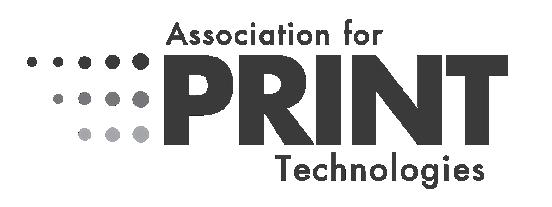
September 15, 2021 // 10:00 AM – 3:00 PM EDT
At Unbound, we expand the notion of what “print” means and explore what it can be. Unbound is a virtual event and online trade fair that showcases the many opportunities in functional and industrial print – that is, where print is part of a manufacturing process used to decorate or enhance the functionality of a product, or to create an entirely new product. If you think that because it’s called “industrial” printing, it’s just for large manufacturing operations, think again. Opportunities abound for businesses of all sizes.

Bryan Bolger Client Success Team Manager, Bolger, Inc.
During high school and college, Bryan Bolger spent summers working at the family business. His first job at Bolger Inc. was as a paper feeder. At the time, the Minneapolis-based technology company known for creating innovative solutions that help unify the power of print and digital communications, ran a small 2-color press. Bryan’s job involved feeding paper into the press and filling in on the larger press when needed. He could also be found working in the warehouse conducting cycle counts on inventory.
His favorite summer job was serving as the company’s “Green Coordinator.” Essentially, he was tasked with making Bolger more sustainable, often working on projects that entailed helping limit the company’s carbon footprint and implementing various improvement efforts. One summer he was able to help turn Bolger into a Zero-Waste facility.
These days, Bryan works as Bolger’s Client Success Team Manager, where he is spearheading the company’s recent transition/rebranding from a CSR team to a Client Success Team. The new group is responsible for working with production and clients to get jobs completed to client expectations. “One of the shifts we have seen from our clients is more demand for variable mail, so we recently restructured our team to all
handle mail requirements and production as well.”
In the 1930s, when 3M needed a print workflow solution to a business problem, Bolger Inc. collaborated with them to create a unique punch card. More than 90 years later, Bolger offers sheetfed commercial and digital print, mailing, large format, variable print and custom IT solutions. “We prefer to partner with our clients, understand their needs and create custom print solutions for them,” Bryan says. “Whether that be project by project or creating a printing program. We’re always evolving to discover a solution that changes the game. It’s just who we are and what we do.”
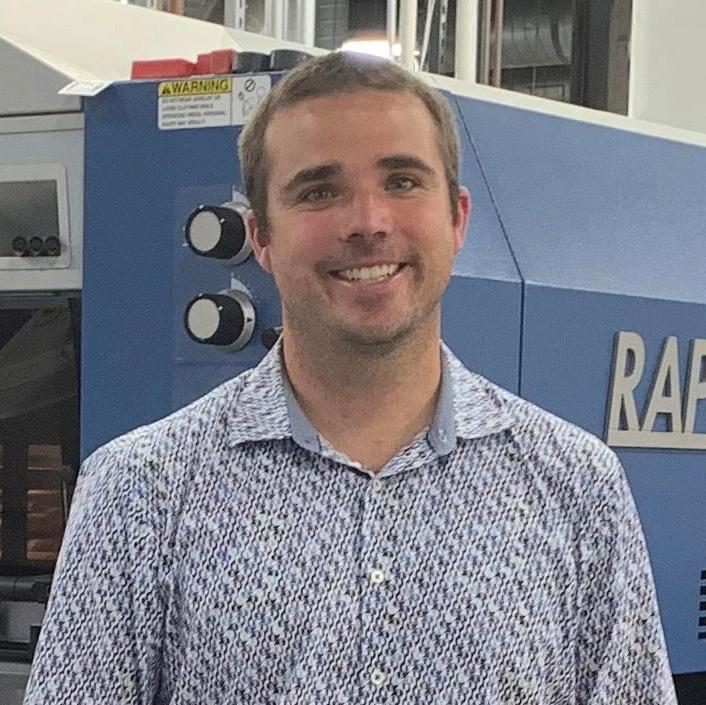
In a time when COVID has forced the industry to rethink how it approaches sales, safety and overall business practices, Bryan is helping navigate the Bolger team through the maze. For example, with fewer customers coming into the plant for press checks due to the pandemic, its clients are relying on Bolger for guidance and approval.
Pre-COVID, in order to keep up with the industry’s natural evolution, Bolger was on the forefront of embracing changes in digital and variable print, methodically establishing

itself as a leader across the all spectrums. It also employs an IT team dedicated to creating custom solutions that help clients streamline their workflow.
Watching how we have changed over the last five to 10 years has been awesome. The stuff we are producing is top notch in terms of quality and complexity.”
One of the company’s strong suits is its ability to deliver on what its customers want and need through listening, understanding what is needed, and creating solutions that work. “This is something we strive on—working together with our clients to produce high quality work,” Bryan says. “Watching how we have changed over the last five to 10 years has been awesome. The stuff we are producing is top notch in terms of quality and complexity. One of the things I love most about working in print is that I’m learning something new every day. Every project is custom, so it opens the doors for different experiences and learning opportunities. The industry is also changing technology rapidly and staying up to date on that
is exciting. Those are the things I expect from the business—to keep me challenged and learning every day.”
Growing up in the print business has given Bryan a unique perspective on what it takes to deliver on the promises made when a customer reaches out for assistance. From where he sits, too many people in the industry tend to just see the technical aspect of how print fits into a job and not what the client may need as a whole. While printing specifications are important, he believes it is important to see how print fits into the marketing mix and a company can help streamline workflows.
“It is super easy to get sucked into the daily grind, but having a higher level understanding of what clients are doing is necessary,” Bryan says. “You have to be curious. People love talking about their job and what they do, but need to be asked. When there is a new or different project going on, even if it is not yours, look at it and ask questions. You will learn something. I always tell people on tours to ‘stick your head in the machine’ so you can actually see what is happening. There is a tendency to look from afar but you will not learn anything that way.”
In many ways, it is Bryan’s next generation, forward thinking approach that continues to

pay dividends. As the industry continues to grow and evolve, he believes the next generation will become even more important. “I had a class in high school that taught Excel and I used it throughout the rest of my schooling, whereas the previous generation has picked it up later in life. Having that experience and using these types of tools create a better understanding around data—it comes more intuitive to us. That intuition and understanding the flow of data is very important.”
As for his role in the Bolger legacy, Bryan says it has been interesting to supervise some of the people who knew him as a kid growing up in the business. “Going from being trained by someone, to being peers, then to becoming their manager is a tough shift. It changes relationships and that is okay. You have to earn the leadership and respect more.”
Bryan intends to continue to work to earn that respect and help the company evolve.


In his book, “FLEX: A Leader's Guide to Staying Nimble and Mastering Transformative Change in the American Workplace,” workplace trends expert Rick Grimaldi presents a real-world guide to harnessing the power of change. With 30-plus years working with large and small companies, Grimaldi’s blueprint centers on how employers can successfully navigate the immense changes and challenges that occur in today’s ever-shifting workplace environment.
That Grimaldi started writing his book before a pandemic forever changed how we view the workplace landscape places him a little ahead of the curve on thought leadership. Grimaldi’s premise is simple: to increase employee satisfaction and secure long-term success in the marketplace, he believes it is more critical than ever to understand how trends shape tomorrow’s labor force. And sure, while the pandemic forced businesses everywhere to react to the now, laying the groundwork for adaptation is paramount. Among other things, that involves using creative solutions for recruiting, engaging and retention.
“Today’s workplace is a patchwork quilt, as we face the new world of hybrid remote work, societal changes and incredible technological advances,” says Grimaldi, coprincipal of Fisher Phillips Government Relations subsidiary, FP Advocacy. “Obviously, the biggest change over the last 15 months is where employees do their jobs. Remote work in some fashion is here to stay.”
Grimaldi believes the key to success will be forward-thinking leaders who focus on what potential employees want. Today’s job candidates want to see a workplace that reflects the cultural norms they have come to know. This means building in rules and systems that remove inherent bias and promote healthy, flexible workplaces where diversity can thrive by embracing a multitude of genders, races, sexual orientations, religions and disabilities. Stay nimble, flex and embrace not only the disruption of the pandemic, but the inevitable and rapid change that is still to come, and the market will reward you.
“Leaders and businesses that flex recognize the key to getting everyone on the same page is to have them feel invested in the workplace.”
— Rick Grimaldi, Co-Principal, FP Advocacy
“Leaders and businesses that flex recognize the key to getting everyone on the same page is to have them feel invested in the workplace,” Grimaldi says. “This can occur through mentoring between more seasoned and less experienced teammates and by constantly providing a seat at the table. The old command and control workplace is gone in favor of active input from all levels of an organization. It is incredibly important to practice mindfulness in the work environment.”
When employers gaze out at today’s unpredictable business climate—one that already has shown its cards in the form of a game-changing global pandemic—if they don’t have a sound game plan and flexibility, they run the risk of being left behind. It is as simple as that.
Think of it as a football team that seemingly has crafted the perfect game plan, only to see it have to be adjusted to the frequent changes that happen during the course of a game. In the throes of those seen and oftentimes unforeseen changes, how fast can your company adapt?
The question is one that Jared Rosenthal has asked from time to time. In 2010, Rosenthal purchased a used RV and launched Health Street, a mobile drug testing and DNA testing company. In those early days, he drove his truck around with the logo of a cup of urine on the side of it. People started calling the vehicle the pee-mobile and complained every time he parked near their building. Lesson learned.

As the pandemic took hold last year, Rosenthal, the CEO turned entrepreneur, reality TV show host and tech innovator, used Health Street’s pivot to technology and launched StaffGlass, a hiring and recruiting software service that enables businesses to easily set up drug tests and occupational health services at more than 10,000 clinics nationwide. Today, his staff has grown into the responsibilities required to help small- and mediumsized businesses compete on the same playing field with larger companies.

“Employees need to understand their sense of purpose, and how their roles impact the rest of the team, the clients, and the business.”
— Nicole Slaughter, Content Editor, Health Street & StaffGlass
“Employees need to understand their sense of purpose, and how their roles impact the rest of the team, the clients, and the business,” says Nicole Slaughter, who works with Rosenthal as content editor at Health Street and StaffGlass. “It is our responsibility to provide recognition for a job well done, create some friendly competition, and allow them the autonomy to feel empowered with their work. The highest engagement tends to come from the employees who are the happiest with their jobs. The human experience is unique, in that you never know exactly how others are feeling or what challenges they may be facing.”
At Health Street and StaffGlass, creating an open company culture is critical to keeping everyone on the same page. Employees who are comfortable communicating with each other often will openly relay important information and ideas without much prodding from management. But Slaughter says it is important to provide the right resources, set clear expectations and continue to check in on a regular basis.
The company uses shared calendars, Zoom meetings and designated channels to keep everyone in sync. It also holds weekly trivia competitions in Slack to stoke the competitive fires. “This creates some team building banter,” Slaughter says. “It also opens discussion to a variety of new topics every week to allow the team to connect on a more personal level.”
One of the companies that Grimaldi holds up as an example of American capitalism at its finest is Saxby’s, a Philadelphiabased coffee company. One of the tenets of its success is self-reflection. CEO Nick Bayer continually asks his team why they are unique, what makes them great and what they want to be.
“This type of thinking allowed it to flex during this last, very difficult, year,” Grimaldi says. “It changed its core focus to better educate its team members on the importance of diversity, equity and inclusion as well as the critical importance of emotional intelligence in leaders. Bayer made the issues core to its training programs. Consequently, the business, after a rigorous qualification process, recently earned the coveted ‘B Corp Certification,’ as a company dedicated to reducing inequality and poverty, making the environment healthier, strengthening communities and creating quality jobs with dignity and purpose.”
In these times of incredible change, it is important to practice mindfulness in the work environment—take the time to decompress, and offer opportunities for increasing health and wellness. Reducing your company’s stress load can lead to a more motivated, engaged and productive workforce.
Veteran executive coach Susan Hodgkinson, MBA, is the author of "The Dignity Mindset: A Leader’s Guide to Building Gender Equity At Work," which was recently honored with a Gold Award by the prestigious Nonfiction Authors Association. Hodgkinson has 25 years of experience working with women, and especially with women of color, to take on the white male corporate world and take advantage of all possible formal and informal tools, training, feedback, familiarity and trusting relationships at work—all the things necessary to achieve your bottom-line goals.
As Hodgkinson says, “Inclusion is necessary, not elective, for success for individuals and the companies that they represent.” We asked her to share a few thoughts below.
What prompted you to write "The Dignity Mindset"?
After working with so many talented people— developing leaders at many levels and from many parts of the world—I finally understood that when it came to gender equity, I was working with women coaches, and there came a point where they had done everything in their control to advance and it wasn’t happening. Or, it was happening and it was being sabotaged by jealous male peers. (And yes, there were plenty of genuinely supportive male peers too). CEOs— mostly male and mostly white, still treat the topic of gender equity as an elective—for example they will pay for a lot of women to go to a great
women’s conference. The problem is, the women already know all the problems they face at work. The MEN need to know, and to know with the same proficiency that they know marketing, or finance. And they don’t. It’s still pushed to the margin, as is racial equity.
What areas of gender inequality do you see that still need improvement?
Geopolitically, women leaders come and go, and the resistance they face—the overt undermining of their power and authority—is often the most exhausting part of their job. Sexual violence and female cutting is on the rise in nearly every country of the world, women are less safe than they have ever been, and while Silicon Valley tech types get richer, it’s less safe than ever for a woman to get into a ride share. There are still more men CEOs in the Fortune 500 named “Bob” than there are women altogether! And there are so many talented women of color so very capable of leading at the highest levels, but they simply don’t get the chance to show what they can do. Legislation is a key piece of the solution—where countries (Iceland) have demanded equal pay, it is permanent; where states (like California) have mandated 30% women representation on boards, it’s happening.
How has the pandemic highlighted these inequalities?
Women still do a significantly disproportionate share of the full load of working, parenting and running the household, and more women take care of sick parents than do men. An estimated 59% of women provide 20 hours or less of unpaid care a week compared to 41% of men (AgingCare Magazine). Single women heads of households not only bore the enormous brunt of working, running the house and homeschooling during the pandemic, some of them simply ground to a halt because they had no more energy in reserves to keep it going. What did they
do? Nearly 3 million of them—many of color—left the workforce, because they had no choice. That leaves many women one unexpected bill away from homelessness.
Why is diversity and inclusion necessary, not elective, for individual and company success?
There are such compelling reasons for this! First, when you only use a small, homogeneous sample of talent to power your business, you are losing out, plain and simple. Think about Kevlar—it is a type of aramid fiber. It is woven into textile aerospace engineering (such as the body of the aircraft), body armor, bulletproof vests, car brakes, and boats. Kevlar was invented by a woman. How many more women have ideas to truly help society in such a broad way whom we will never hear from because all media: online, print, social, and worst of all Wikipedia—focus to a great extent on men. Men’s stories, men’s achievements, men’s fortunes, men’s sports, men’s power. Wikipedia content— accepted in over 60% of U.S. court cases last year—is generated by 90% male authors, and it’s “voluntary.” To me, that’s code for “closed shop.”
While every employee may not invent the next Kevlar, the only way a CEO really knows for sure she, he or they is truly optimally positioned to compete in today’s marketplace is if the best and brightest talent (straight, queer, trans, female, Black, brown, Asian, Indigenous, disabled, Caucasian, etc) is represented across the talent pool. But that’s only the first step. Once the best

and brightest are hired, they must feel like they BELONG. By belongingness, I refer to Maslow’s idea that refers to the essential human emotional need for interpersonal relationships, affiliating, connectedness, and being part of a group.
Next, all people have esteem needs and these include a sense of self-worth, accomplishment and respect. Having talked and worked in-depth with many employees who are not straight white men, very few would say their belonging and esteem needs are met at work. In some cases, the idea that diverse talent is “unseen” at work is so problematic that many gifted people, including a heavy emphasis on Black Women, report that they have opted for a “quit and stay” relationship to their job—they’re in attendance, but they’re not engaged. It’s soul crushing for them, and it’s a tragic mistake on the part of the organization which misses out on the gifts of that individual and also finds that as quickly as diverse candidates are hired, they leave. Organizations need to step up and make changes when it comes to diversity, equity and inclusion in order to thrive.
You can learn more about Susan Hodgkinson at ThePersonalBrandCompany.com.
"The resistance women leaders face—the overt undermining of their power and authority—is often the most exhausting part of their job."

Direct mail pieces are personalized a lotorcompletely
Are you using all of your marketing muscles? Direct mail is a tried and true way to reach your audience and beef up your campaign. According to PFL’s “The State of Multichannel Marketing” 2020 report, a quarter of marketers planned to increase their budget for direct mail during the pandemic, and they are seeing results. Those who are investing more in direct mail are more likely to report the following.
Direct complementsmailthe other channels used by improving overall campaignmultichannel performance
Directmailis effectivesignificantlymorewhenitcomestoreachingall targetaudiences
Their average multichannel campaign is producing a “good” or “very good” ROI
Direct mail efforts are integrated with technologymarketing used for multichannel campaigns















Cougar® is noted as the premium paper of choice for conveying emotion and creating memorable experiences. With three luxurious finishes, two colors, matching envelopes, an extended digital offering and a vast array of sizes and weights, Cougar is a powerful way to bring your project to life.



















Request the latest Cougar printed sample at info.domtar.com/retail





